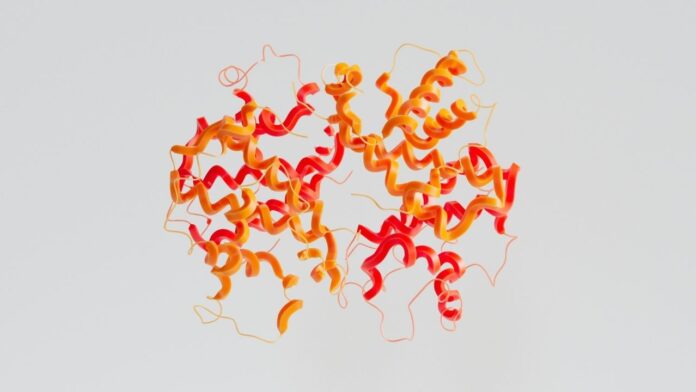Multispecific antibodies (msAbs) bind two or more distinct epitopes and have a number of advantages over monospecific antibodies, including fewer escape mutations, lower manufacturing costs, increased effector cell recruitment, and tailored delivery.
Several multispecific platforms have been developed in the last 30 years to enable customized deployment.
Antibody fragments (such as BiTEs, DARTs, diabodies, and tandem scFvs) have been utilized to simultaneously target cancer cells while both recruiting and activating T cells via CD3 interaction.
Due to their greater half-life, stability, and Fc-mediated activities, full-length msAbs are also extensively utilized.
More than 85% of Multispecific antibodies are currently used to treat cancer; nonetheless, their promise as novel antivirals is clear, and interest in this application is expanding.
The multispecific antibody design’s inherent versatility allows for both host-directed and pathogen-directed techniques. Antibodies that target universal receptors and neutralize divergent viruses within a family are known as host-directed antibodies.
Filoviruses, which all facilitate cell entry by engaging the conserved intracellular host-receptor, are a good example of this notion.
How to measure Haptoglobin with an ELISA kit?
The Haptoglobin ELISA kit is used to detect and quantify endogenous Haptoglobin protein levels. Human Haptoglobin is recognized by the assay. The microwells have already been pre-coated with a Haptoglobin-specific antibody.
After incubation, the coated antibody captures the Haptoglobin protein in the samples. To identify the collected human Haptoglobin protein, another biotinylated specific for human Haptoglobin antibody is added after extensive washing.
Streptavidin-HRP is used to produce the signal, followed by Tetramethyl-benzidine (TMB) reagent.
To stop color development, a solution containing sulfuric acid is employed, and the color intensity, which is related to the amount of bound protein, is measured at 450 nm with the correction wavelength set at 630 nm.
The plasma glycoprotein haptoglobin (HP), also known as zonulin, is a member of the peptidase S1 family. Serum Hp is a type of acute-phase response protein produced mostly by hepatocytes and is broadly dispersed in human circulation.
Serum Hp’s primary physiological role is to bind free haemoglobin produced during red blood cell lysis and to protect tissues and arteries from oxidative damage.
Hepatocellular carcinoma, Pancreatic cancer, Type 2 diabetes mellitus, Diabetes kidney disease, and other disorders have Hp levels that can be used to diagnose them.
[Also Read: Explaining the Ins and Outs of Phlebotomy]
MBP antibody
Western blot, Immunohistochemistry (Paraffin), Immunohistochemistry, Immunocytochemistry, and immunohistochemistry are only a few of the scientific applications for MBP antibody.
MBP is targeted by these antibodies in human, rat, mouse, Guinea pig, and bovine tissues. The classic MBP gene encodes a protein that is found in the myelin sheath of oligodendrocytes and Schwann cells in the nervous system.
MBP (myelin basic protein) is actually a protein that is known to be involved in the myelination of nerves in the nervous system.
And, the myelin sheath is a multi-layered membrane that works as an insulator for dramatically accelerating the speed of axonal impulse conduction. It is unique to the neurological system.
MBP interacts with the myelin membrane’s lipids to preserve the right shape of myelin. MBP has sparked interest because of its function in demyelinating disorders, including multiple sclerosis (MS).
The autoimmune response’s target antigen in MS has yet to be identified. Antibodies against MBP, on the other hand, have been implicated in the etiology of MS in multiple investigations.
PPAR Gamma antibody
PPAR gamma Antibody detects endogenous levels of total PPAR gamma protein. Moreover, PPAR alpha and PPAR delta are not cross-reactive with the antibody.
Immunizing mice with a synthetic peptide matching to residues surrounding Ser84 of human PPAR gamma produces PPAR gamma antibody. Protein A and peptide affinity chromatography are used to purify antibodies.
PPAR Gamma controls the storage of fatty acids and the metabolism of glucose. PPAR Gamma activates genes that promote fat cell lipid absorption and adipogenesis.
And, PPAR gamma knockout mice had no adipose tissue, indicating that PPAR Gamma is a key regulator of adipocyte development.
It improves insulin sensitivity via increasing fatty acid storage in fat cells (reduced lipotoxicity), increasing adiponectin release from fat cells, activating FGF21, and upregulating nicotinic acid adenine dinucleotide phosphate synthesis.
PPAR gamma is highly expressed in adipose tissue. Lower in skeletal muscle, spleen, heart, and liver. Also detectable in the placenta, lung, and ovary.

